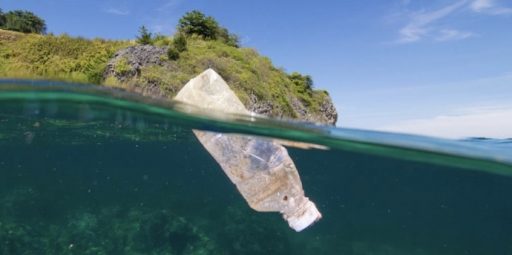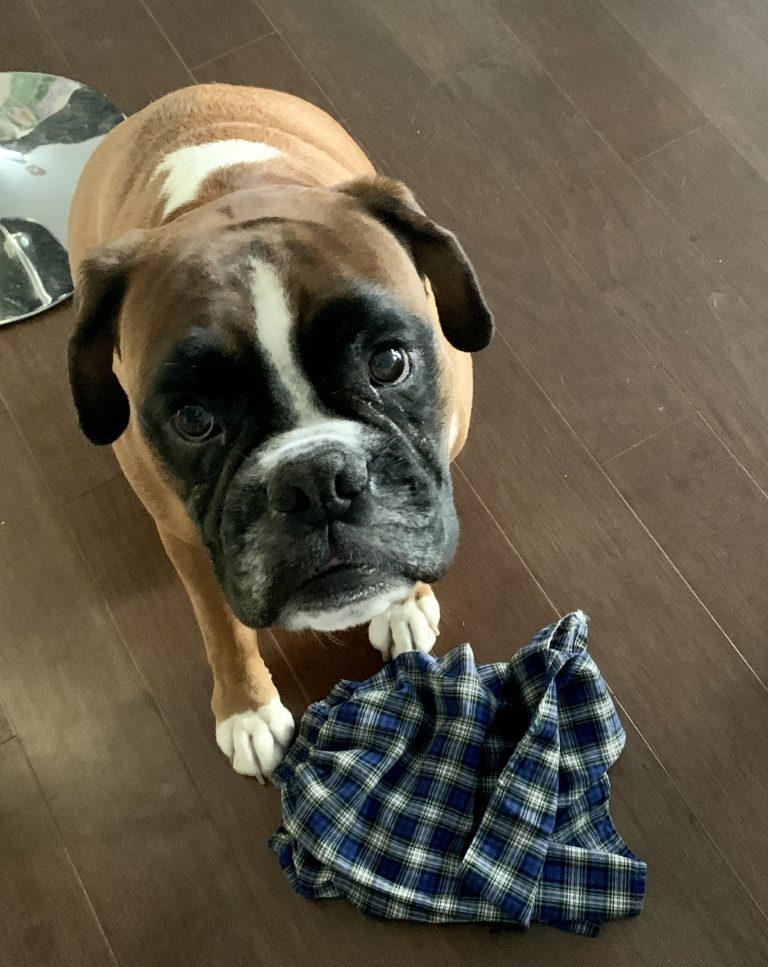CAN BACTERIA BREAK DOWN PLASTIC?
Can bacteria break down plastic? Is there plastic-eating bacteria? This idea sounds like science fiction, especially considering plastic is man made.
Guess what???
Bacteria breaking down plastic is a thing! Not only is plastic-eating bacteria real, but this bacterium naturally evolved! Let’s look at how researchers are using these little beasties to advance biotechnology. For what, you might ask? To fight against plastic pollution!
IDEONELLA SAKAIENSIS
In 2016, Japanese scientists isolated a bacterium from outside a bottle recycling plant. Why, you ask? I have no idea, but it’s a good thing they did.
In their search the scientists discovered a new species: a species of plastic eating bacteria!
(For more reading on cool new species, try that article! Or this one.)
Anyway, this new species is named Ideonella Sakaiensis! (Don’t laugh too hard when I attempt to pronounce this during the podcast!)
In just 80 years, evolution has succeeded in producing an organism that can defeat a man-made material—plastic—that did not previously exist in nature.
This bacteria breaks down polyethylene terephthalate (PET), a type of plastic used in soda bottles, among other things
Article about new bacterium species here!How did this happen? Why did these plastic eating bacteria evolve?
PLASTICS POLLUTION
That’s a bit of a mouthful.
WHAT ARE PLASTICS?
Plastic is all around us. This is a science blog after all, so let’s take a minute to look at its chemical makeup.
Plastics are polymers.
Plus, the bonds between polymers don’t break apart with a chemical reaction the same way that natural compounds do.
Not all polymers are manmade. One of the most important natural polymers is DNA!
Cellulose and chitin are a few more.
Over prolonged periods exposure to sunlight (UV light) can result in photo-degradation of plastics. This exposure often results in the fragments of plastic becoming smaller and smaller.
Enter a new issue. Microplastics.
MICROPLASTICS
While photodegradable plastics–plastics capable of being broken down by light–may break down, if you read the fine print, the truth is that these plastics never completely degrade! They divide into tiny pieces called microplastics.
That turtle was saved (!!) but here’s another horrible fact: microplastics have been detected in the air.
A recent study found microplastics in the atmosphere in a remote region of the French Pyrenees.
Now we’re breathing this stuff in?
MICROPLASTICS IN HUMAN BLOOD
Update on March 22, 2022
Microplastics have been found in human blood for the first time by scientists who say the discovery shows the tiny particles can travel around the body and may even lodge in organs. (study on microplastics in human blood here)

HERMANN STAUDINGER, THE FATHER OF POLYMERS
Prior to the early 1920’s, chemists doubted the existence of molecules having molecular weights greater than a few thousand units.
In retrospect, this limiting view seems ludicrous, then again so is showing anyone a YouTube video after you’ve watched it. They are never funny to anyone else. No idea why. Thankfully, some are informative!
Staudinger presented sound experimental evidence to support the existence of high molecular weight polymers. It took twenty years before the science community accepted his polymer theories.

He studied natural compounds such as rubber and cellulose.
He formulated a polymeric structure for rubber, based on a repeating isoprene unit (aka monomer)
WHY DO WE NEED PLASTICS?
Plastics were originally developed to avoid the use of animal-based products: I can see why people would want to do that.
Okay, it would be tough to live in our society without plastics. That said, plastics are clogging our planet, which is why scientists thought that these small but mighty bacteria needed investigation. After they answered the question, ‘Can bacteria break down plastic?’ researchers wanted to know how.
What is the bacteria’s secret weapon in actually breaking down plastic?
ENZYMES!
CAN BACTERIA BREAK DOWN PLASTIC?
After the Japanese scientists published their findings, the science community at large was skeptical. (I saw several such comments in publications.)
After all, how is it even possible that a bacterium would evolve that could use plastic as its major energy source? In only eighty years?
CREATING THESE SUPER ENZYMES
Then, they engineered a connection between the two enzymes to create a super-enzyme! This increased the plastic breakdown 3 x faster.
Maybe the researchers celebrated with that mango martini!
Obviously, researchers have a ways to go, but this is a significant leap forward in our fight against plastic pollution.
BIODEGRADABLE PRODUCTS....BAMBOO!
Obviously, we can try to stop using some plastics, like asking the takeout guys not to include utensils. I did find this cool company that has a lot of products made from bamboo.
If you want to help out, here’s an affiliate link for bamboo straws!
STEM ACTIVITY
While biotechnology advances, you can turn this into a STEM activity with your kids or grandkids. Wear those plastic gloves (!!) and go to the park or shore. Pick up some plastic trash. Recycle it! And tell them about polymers.
Buy them some cool bamboo straws, too.

Check out NOAA’s webpage for other ideas about how you can help with the fight against plastic pollution.

























Great post and one of my favorite so far. But being the pessimist I am I would be concerned if these things would mutate and start breaking down plastics that we need to keep food fresh etc. I guess time will tell. Keep up the good work. Mike
That’s exactly what my story idea was about! I am even more inspired to write it now, thanks! Glad you enjoyed this post.
I’ve been meaning to pick up some reusable straws so thanks for the link. I learned a lot from this post about enzymes and polymers. Thank you.
You’re welcome! You get eight in a pack of those straws which is nice. I throw mine in the dishwasher. (Hm…I never did check to see if that was ok…) Thanks!
An important topic and very informative post! Thanks! When they stopped allowing recycled bags at the grocery store, and I started hauling home all those plastic bags – it gave me the hives! I know countries in Europe that started changing 10 cents for a plastic bag and it reduced use something like 80 percent! Here’s to a more environmentally friendly alternative!
I too was dismayed when I had to go back to the grocery plastic bags! A small detail during a pandemic but it was dismaying just the same. I’m pleased that you found my post informative! Thanks.
What an important topic, Sue. I try to limit my use of plastic, but it’s hard especially when I order online. Keep up the great posts.
I was going to mention that I found the waste an unfortunate byproduct of online ordering, too. I save everything and try to reuse it. Thanks, Amy!
I remember coming across the plastic eating bacteria years ago, but nothing seemed to follow on from the original claim. I’ve also seen countless plastic alternatives that are completely environmentally friendly and work just like regular plastic, but again, nothing seems to come from it. I guess it compaines aren’t willing to change it doesn’t matter how good your plastic alternatives are
I suspect that since plastic is so cheap to manufacture, companies take the easy road. Alas. We can make changes ourselves. Every little bit helps! Thanks so much.
This is so interesting. Plastic had definitely become a problem and I think we relied on it for packaging for too long instead of looking for alternatives all along.
Agreed! Companies take the easy, less costly route and our environment has suffered. Awareness is a huge step in the right direction though. Thanks!
This is really interesting. Thank you for sharing this information Susan
You’re welcome! Thanks for stopping by!
Amazing post! Thank you for sharing this important and informative post! This is another really detailed post that I love! I have been trying to use less plastic to help save the planet!
Fantastic about using less plastic! I’m so glad that you love my posts. Thank you.
This was such an interesting and informative post. Plastic packaging is definitely becoming more and more of a problem for sure. Thanks os much for sharing!
Plastic packaging is much more of a problem, I agree. Online shopping increase with covid hasn’t helped.Thanks for stopping by.
This is a such an amazing informative post, your knowledge of specific subjects is amazing and I believe the post you’ve written here is an important factor we need to think about in the future.
That’s such a lovely compliment! I agree, we need to stay vigilant. The pandemic has taken its toll on humans, and that’s nothing to make light of, but we can’t forget about our planet. Thanks, Luke!
That’s fantastic news! I wrote about micro-plastics a while ago when they first crossed my radar, but did not know that a potential solution to the environmental crisis had been devised. The resilience of both nature and human ingenuity is remarkable, thanks for this incredibly informative post!
I’d be excited if humans could harness these enzymes to eradicate microplastics!Human ingenuity amazes me, too. I’m pleased that you liked my post. Thank you!
Great post and so fascinating to read! Your posts are always like a big science lesson and I appreciate that x
I’m glad that you found my post fascinating! I’m trying to find a balance between the backmatter and the headline, so people can make sense of the science and not roll their eyes! Thank you.
Absolutely fascinating read! I feel like plastic has always been considered the easy route – but really now we need to be more careful and think about other options. It’s one of the things I’ve been noticing when I order online, if they say how they package it (particularly eco-friendly) – my online shopping has increased a bit since I haven’t really been leaving the house unless I have to.
Very interesting though, I think it’s brilliant that you can give a science lesson, make it fun and interesting, and most importantly help make people understand the why’s and how we can help. Why something like this is important to learn about. Brilliant! Thanks so much for sharing!
I haven’t looked for ‘eco-friendly’ when I shop online. Great tip! I’m gratified that you think I’m sneaking in science in a fun and interesting way. That’s my objective, so I appreciate you mentioning this! Thank you!
This is a great post! So interesting and I love that you’ve included different viewpoints especially how plastic started as a positive thing and still can be, to a degree. There’s definitely a lot that needs to be done about plastic pollution though. The plastic eating bacteria sounds… interesting!
Plastic is a positive thing. Imo, it has become too much of a good thing! Maybe we can harness these little bacteria to help us. Bacteria and viruses are powerful. Look at covid. Okay, maybe don’t do that, but you understand all too well. Thanks, Jenny!
This reminded me of one of our science subscription boxes where we learned about polymers and DNA. I had heard about a plastic munching bacteria but not paid that much attention so your post was absolutely fascinating – so detailed and useful (as always) thank you, Sue! Lisa
I’m so pleased that you found my post fascinating. It’s fun to dig a little deeper and try to make sense of science. Thank you Lisa!
I love how you explain all the science behind such a complicated process! The fact that nature can help lessen manmade waste and pollution gives me so much hope for the future. I will continue to do my part to reduce my use of plastic.
I agree! Everyone pitching in will help to manage our man made waste. Thank you so much!
Interesting post. Thank you for sharing. I learned something from it.
You’re welcome! Thanks for stopping by.
This was such an interesting post! Plastic sounding bacteria sounds like it has the potential to be incredibly useful for the planet but I guess time will tell.
Tash – A Girl with a View
Very true! We’ll have to see if scientists can take this discovery to a macro level. Appreciate you stopping by, thank you!
Quite informative. While it does protect the subject from humidity etc but the plastic chemical in itself also harms the product too. It also causes leeching. But about the bacteria, I’ve heard of it and yes there was a project on it too. But what I heard or maybe knew was that it only degrades a certain plastic type. Only one regardless is biodegradable but only to an extent, the rest are not. Regardless learned some from your post. Just thought to add a perspective or insight, whichever is factually right. Thanks for sharing x
Isa A. Blogger
http://bit.ly/39f9FN0
Yes, these particular enzymes only break down a specific polymer. Enzyme science has a way to go before it can make a dent in our mountains of plastic waste. But we have to start somewhere. Thank you for sharing your knowledge!
Great post! I’m against plastics after watching David Attenborough’s programme with my little boy. This could really be a breakthrough.
I didn’t see David Attenborough’s program. I’ll need to look for it. I sure hope this enzyme research will become a breakthrough and eat through our landfills. Thank you so much!
Wow, this is such a great post, thanks so much for sharing some fab information as always! I’d heard about microplastics being detected in the air which is quite concerning! I’ll definitely have to check out those reusable straws you’ve mentioned, I keep meaning to purchase some.
I’m glad you love my post! I’ve found that paper straws tend to fall apart before one is done with the drink, so bamboo is the way to go. Thanks so much!
Very interesting. By the time I got done reading about all the plastic pollution, I needed that mango martini!
You’re not kidding! I’m ready to join you. It’s close to five o’clock as I’m replying….! Thanks.